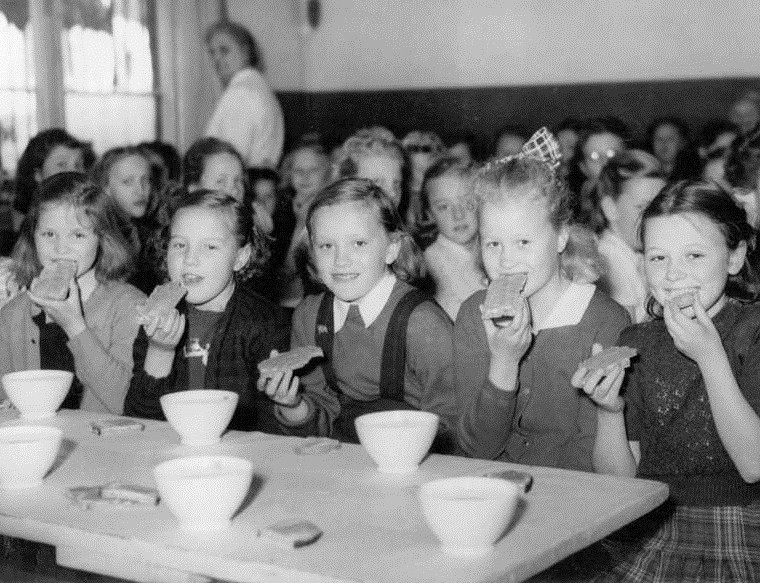This week’s reading’s on “healthy children” and “healthy schools” was based on Cynthia Comacchio’s, “‘The Rising Generation’: Laying Claims to the Health of Adolescents in English Canada, 1920-70” and Mona Gleason’s, “Race, Class, Health: School Medical Inspection and ‘Healthy’ Children in British Columbia, 1890-1930”. These are also the readings my group and I chose to present on and answer the question as to how “experts” defined the healthy/normal child and what remains of such definitions for school policies?
The first article by Cynthia Comacchio discusses the medicalization of adolescents in Canada during the 1920-1970s.[1] The article was written for deconstructing the process of the medicalization of adolescents and became a way to control them. The way in which they could be controlled was through the development of sexual education programs. Those in power were working hard to conform to adolescents and others to Canadian Society. They did so on the bases gender, race and class. Medical discourses consisted of the values of white middle-class Anglo-Celtic.[2] The article highlights how medical discourse was racist saying “Immigrant children had to be showed the Canadian way, not the ‘old ways’”.[3] The term “Teenager” was introduced and used to describe the stage of maturation in adolescents. This can be related to Steven Mintz article “Age as A Category”. Some other connection made from this article and what we have learned thus far in the class is the emphasis on social control/concern. Focusing on the mental and physical health of adolescents but also using children to make soldiers and well-behaved middle-class citizens. It refers to the Racism and conformity of Indigenous peoples.
The second article by Mona Gleason discussed medical inspections at schools in the 20th century and how it was a means of legitimatizing power of middle-class white privilege and social class boundaries. The article was written because health is a social contrast and class/race influenced this. It demonstrates how non-middle-class were punished through medical inspections. It discusses 5 male, white, middle-class doctors that were first appointed to the Provincial Board of Health. It describes the racist discourse against Asian immigrants and Indigenous people. Addressing them as dirty and not meeting the health standards. However, they did not help those that were ostracized for not meeting the standards. It talks about gender ideals and how a man must be strong, and a woman must be able to bear a child in order to be considered “healthy”.[4] Education was meant to improve the situation,[5] but the education was based off white middle-class expectations/customs and if you did not fall under this category you were not deemed as “healthy”. Again, this article connects to other course material such as the references to middle-class values rural communities and racism in Canada. Experts defined a healthy\normal child within the means of their class, race, and gender. Both articles show examples of this and how children who did not meet the expectations were looked down upon despite reasons why they could not meet the standard. They describe what was healthy in Canada during this 20th century, and how it was enforced in different genders, race, and classes. It was developed to control and segregate society. Not everyone could conform to these demands therefore they suffered and were put in a separate category. This still presents in today’s day and age. If a child comes to school wearing the same clothes repeatedly or not bathed then there is automatic judgment put on that child, their abilities and their parents.
[1] Cynthia Comacchio, “‘The Rising Generation’: Laying Claims to the Health of Adolescents in English Canada, 1920-70.” Canadian Bulletin of Medical History 19, no.1 (2002): 139-178.
[2] Cynthia Comacchio, “‘The Rising Generation’: Laying Claims to the Health of Adolescents in English Canada, 1920-70.”
[3] Cynthia Comacchio, “‘The Rising Generation’: Laying Claims to the Health of Adolescents in English Canada, 1920-70.”
[4] Mona Gleason, “Race, Class, Health: School Medical Inspection and ‘Healthy’ Children in British Columbia, 1890-1930.” Canadian Bulletin of Medical History, 19, 1 (2002): 95-112.
[5] Mona Gleason, “Race, Class, Health: School Medical Inspection and ‘Healthy’ Children in British Columbia, 1890-1930.”
Bibliography
Comacchio, Cynthia. “‘The Rising Generation’: Laying Claims to the Health of Adolescents in English
Canada, 1920-70.” Canadian Bulletin of Medical History 19, no.1 (2002): 139-178.
Gleason, Mona, “Race, Class, Health: School Medical Inspection and ‘Healthy’ Children in British
Columbia, 1890-1930,” Canadian Bulletin of Medical History, 19, 1 (2002): 95-112.
I chose to incorporate these articles into my portfolio being that they outline how Indigenous children faced segregation regarding health. Health was determined by race and class and was required in order for children to be deemed acceptable in society. Health regulations were incorporated in schools and were based on the Euro-Canadian ways of life. This relates to residential schools being that they too were based on the same expectations and values of Euro-Canadian society.

Leave a Reply